Story of the Strait Connecting the Mediterranean and the Atlantic
Western Mediterranean
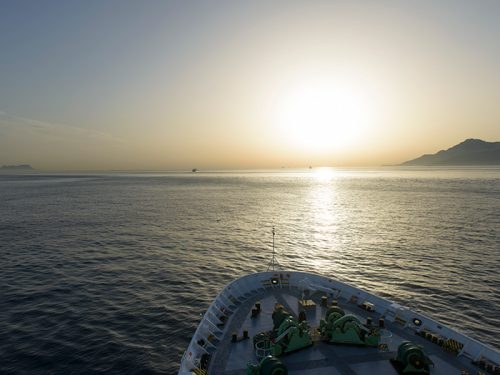
The Strait of Gibraltar separates Spain from North Africa. Historically, it has been a strategic point of the sea. Since the dawn of history many wars took place there, but today it is a popular tourist area where you can enjoy the history and rich culture. Let’s take a look at Gibraltar, known as the “Key to the Mediterranean,” and the story behind the strait that stretches out before it.
Original text and composition by Kanamaru Tomoyoshi (Cruise Writer) An experienced traveler who has cruised to all five continents as well as many destinations around Japan, Kanamaru collaborates with the magazines “Cruiseship Collection” and “Cruise,” writing columns and cruise reports.
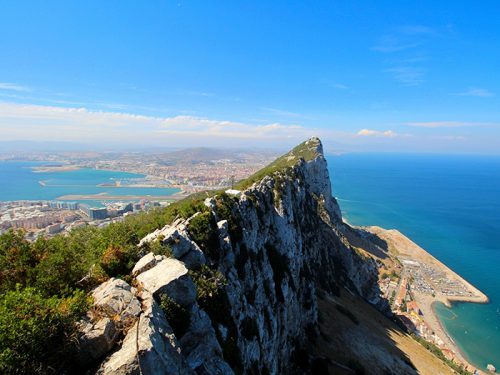
The Strait Born from Hercules’ Laziness
On his way to an island in the westernmost part of the ocean Okeanos, Hercules, a hero in Greek mythology, had to cross Mount Atlas. Thinking this too much trouble, Hercules used his monstrous strength to tear the mountain in half. Thus, the Atlantic Ocean and the Mediterranean Sea were connected, and the two separated mountains were collectively called the Pillars of Hercules. The Rock of Gibraltar, located on the Iberian Peninsula, is considered one of these pillars. The Strait of Gibraltar, said to have been created by Hercules’ sidestepping, later became the stage of various scenes in history as a key point of maritime transportation connecting the Mediterranean Sea and the Atlantic Ocean. Let’s look at such a strait that transcends time and space.
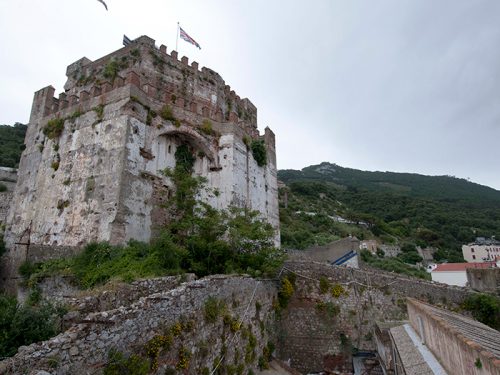
The Origin of the name “Gibraltar”
In 711, Tarikh Ibn Ziyad (? – 720), a general of the Muslim Umayyad, crossed the strait from Africa and landed on the Iberian Peninsula. He demonstrated his determination to stay the course by burning down the fleet of ships that had crossed the sea, then quickly conquered the Iberian Peninsula, including the Visigothic Kingdom. The landing site was named Jabal Tariq (Tariq’s Mountain) in Arabic after him, which then became the Spanish word “Gibraltar.” After Tariq’s occupation a Moorish castle was built, and the area was ruled by Muslim forces for more than 700 years.
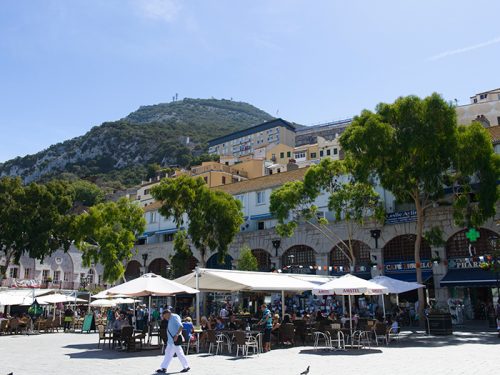
Taking Advantage of the Great Traveler
The port city of Tangier, on the African side of the Strait of Gibraltar, was where the great traveler Ibn Battuta (1304-68 or 69) was born in the early 14th century. He spent 30 years, about half of his life, traveling from North Africa in the west to China in the east, and compiled the record in 1355 titled, “A Gift to Those Who Contemplate the Wonders of Cities and the Marvels of Travelling.” After his first trip at the age of 21, Battuta was rarely in Tangier. Today, however, Tangier has both a street and an international airport named after him, and the chalk mausoleum said to be his tomb is a tourist attraction that promotes the city.
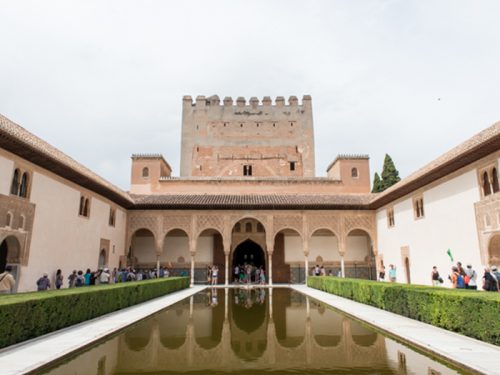
The Fall of Granada and Columbus’ “Discovery” of the New World
The Nasrid Kingdom of Granada, who built the Alhambra, was the last Islamic state in the Iberian Peninsula. It was destroyed by the union of the Crowns of Castile and Aragon (later Spain) in January 1492. At the time, Christopher Columbus (1451 – 1506) was pitching his “voyage to discover a new continent” to the united Crowns. Queen Isabel of Castile was interested in his plan, and approved it partly because the fall of Granada had freed up war funds. At this time, Columbus had just left Granada in search of a sponsor. The Queen’s messenger ran after him, leading to his historic voyage that same year.

The hero of the War of the Spanish Succession
In the beginning of the 18th century, the War of the Spanish Succession (1701-14) was fought with neighboring countries when Louis XIV of France tried to enthrone his grandson on the vacant Spanish throne. After that, the Treaty of Utrecht (1713) was signed to take care of the situation. Britain, which occupied Gibraltar during the war, was granted possession of the territory, which it holds to this day. It was the British general John Churchill (1650-1722) who caused great trouble for the French in this war. For his services in the war, he founded the prestigious aristocratic family of the Dukes of Marlborough. He was also the ancestor of the future Prime Minister, Winston Churchill, and the bride of the British Crown Prince, Princess Diana.

The British Army’s Monkey Mission
The Rock, a huge rock that towers over Gibraltar, is home to Europe’s only wild monkey, the Barbary macaque. Its population was introduced for hunting in 1740 and became established thereafter. Legend has it that Britain would withdraw from Gibraltar if all of the Barbary macaque disappeared. In 1900, there were 130 Barbary macaques in Gibraltar, but by 1940, during World War II, the number had dwindled to just four due to lack of supplies. Prime Minister Winston Churchill (1874-1965) ordered the transfer of 24 monkeys from North Africa, which allowed them to narrowly avoid extinction. Even now, the care of the monkeys is under the jurisdiction of the British Army Artillery.
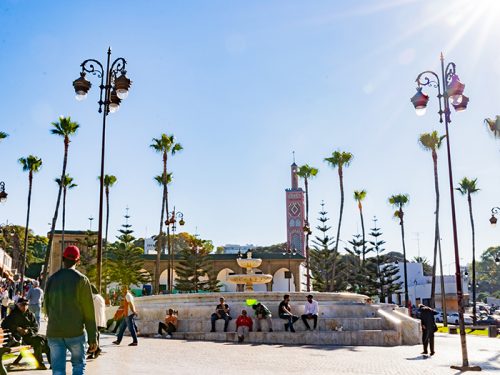
Tangier, where Moroccan independence arose
The Moroccan city of Tangier, on the Strait of Gibraltar, was the scene of international conflicts. Morocco was divided by France and Spain in 1912, while the European powers declared Tangier and the surrounding area an international zone of unarmed, permanent neutrality. As a free port with no tariffs, Tangier prospered in trade and finance, but on the other hand, smuggling, drug trafficking, and prostitution were rampant. The police and customs were also a mix of many nationalities, so the chain of command was disorganized and it was impossible to crack down on crime. Naturally, Tangier gradually became a base for the Moroccan independence movement. In 1956, Morocco won its independence, and in the same year Tangier was returned to Morocco, closing the curtain on its period as an internationally administered region.
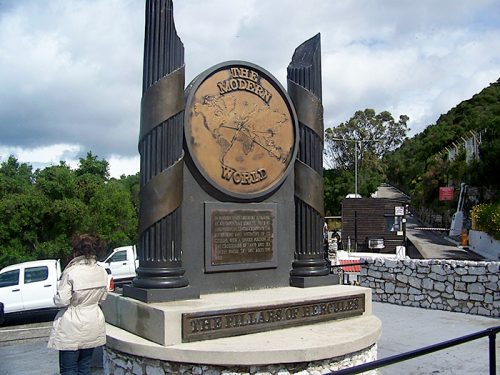
Why John and Yoko got married in Gibraltar
In March 1969, John Lennon (1940-80) was looking for a place to hold a romantic wedding with Yoko Ono. Paris was their first choice, but the couple gave up as they would have had to stay in France for two weeks before getting married. Gibraltar was the next destination. The only conditions required were to present their passports and birth certificates, and to spend one night in Gibraltar either before or after the marriage. They liked the episode of the “Pillars of Hercules,” and held their wedding ceremony in front of it. As the Strait of Gibraltar was long the scene of various, I hope that at least cruise visits to the area will be filled with the love and peace that John and Yoko appealed for.
PHOTO: PEACEBOAT, Endo Kazuhide, Isogai Miki, Suzuki Shoichi, AquilaGib /
CC-BY-SA-3.0, Nathan Harig / CC-BY-SA-3.0, shutterstock.com
